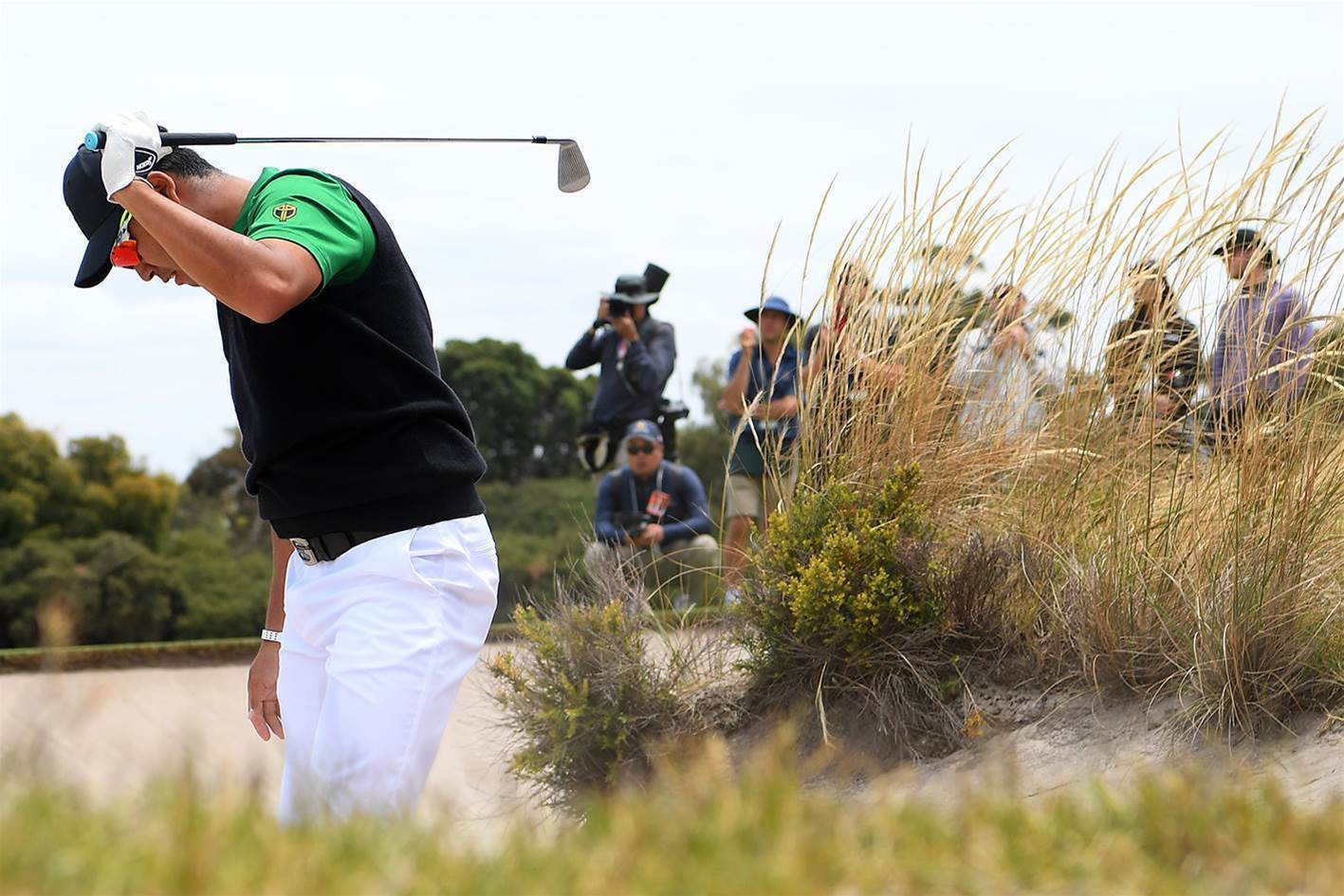Every golfer who has ever played foursomes has made the same deal on the first tee.
And it would be difficult to imagine any have ever managed to fulfil it.
“Nobody says sorry,” is the standard refrain but really, who can stick to that?
The notion that you can put your partner – often one of your best mates – in an unplayable position on the golf course and not feel bad about it is ludicrous.
Perhaps it’s different at the top levels of the game but at Royal Melbourne, with the Presidents Cup to play for, it seems unlikely.
Following the action on course Friday, the disappointment of the players every time they hit a shot they considered less than acceptable was palpable. A miscue into a bunker, a missed putt or a tree-bound drive was quickly followed by a drop of the head for leaving their partner snookered.

There may not have been any formal apologies but it’s a safe bet that every missed putt or approach shot that fed away from the flag came with a built in internal ‘sorry’.
It’s a noble theory, ‘never say sorry’, but in a game that is almost exclusively an individual pursuit, common sense says introducing a team element changes the emotions at play.
RELATED: Americans off the canvas in late Presidents Cup rally
Fourball is different because it more resembles the format most golfers play most often.
Yes, the result is team based but each individual is playing their own ball and that keeps things in the comfort zone.
When you share shots, everything is different.
For elite players the first decision is which ball to use. Most weekend warriors would struggle to tell the difference between a Titleist and a Top Flite but at the top levels of the game players are somewhat more sensitive.
Then there is the strategy of which player will hit from the even numbered tees and which the odds.
On Saturday morning at your average suburban club the decision will likely be based on who happens to be ready first on the first tee.
But at Royal Melbourne, Ernie Els and Tiger Woods have reams of data on each member of their teams to tell them how, statistically, each will mesh with all 11 others.
And then there’s the instinctive differences in the way players ‘see’ the game. An aggressive player who likes to fire at flags will have a ‘middle of the green’ plodder constantly on edge.

And all of that leaves aside personality traits and the role they play in performance.
On paper, Hal Sutton’s decision to pair Tiger Woods and Phil Mickelson together at the 2004 Ryder Cup seemed obvious given their respective world ranking (2 and 4).
But who could forget the look on Woods’ face as Mickelson’s tee shot at the 18th hole – with the match all square – sailed wide left and nestled against a fence?
The subsequent penalty drop cost them the match, the first of two losses for the duo that week.
Foursomes is probably the least popular of all golf’s formats with most club golfers and given all that can go wrong it’s no great surprise.
But for spectators and hard-core golf nerds there’s a lot to like. Especially if you don’t have to play it yourself.
Related Articles

2026 Crown Australian Open Dates Confirmed

Spain's David Puig wins BMW Australian PGA Championship













